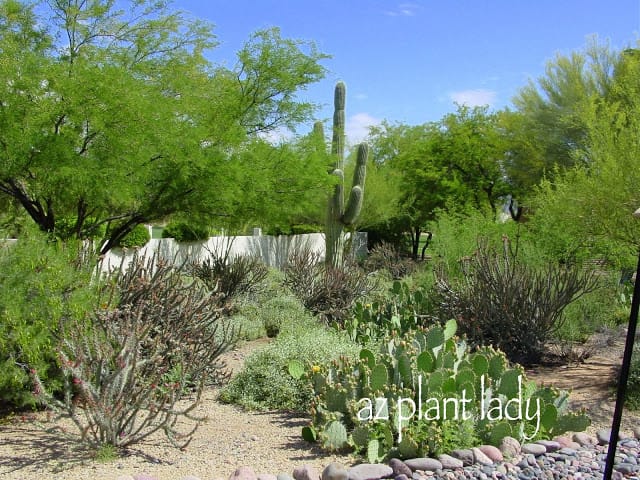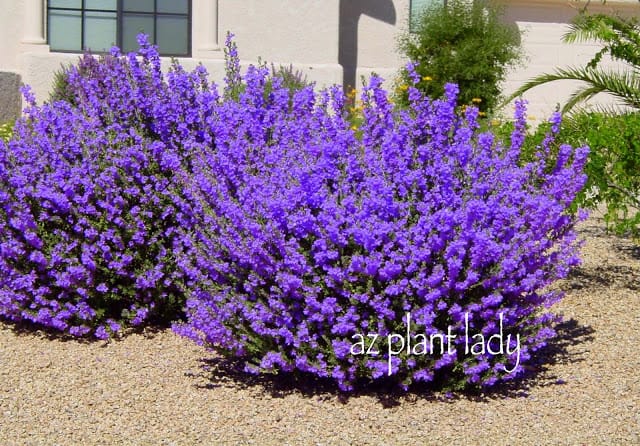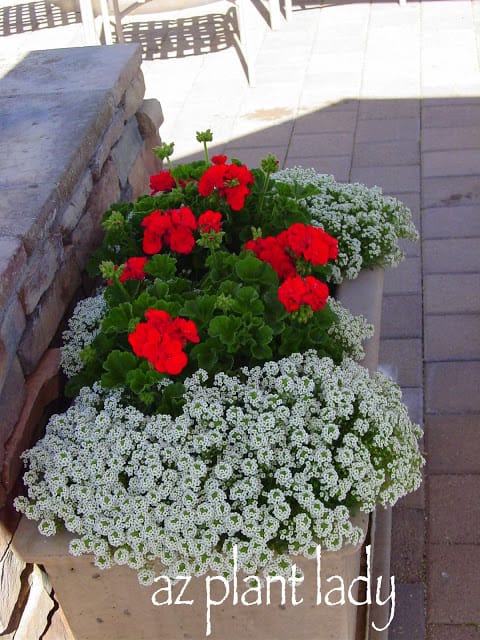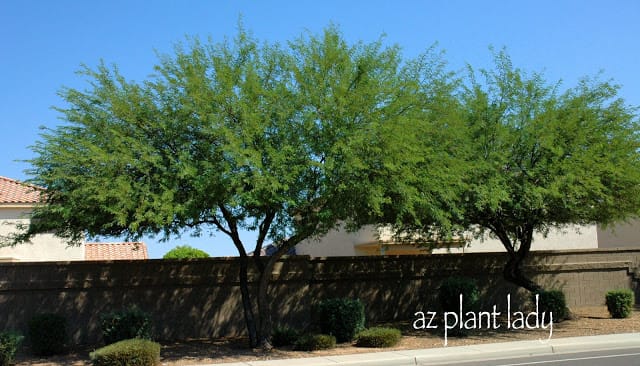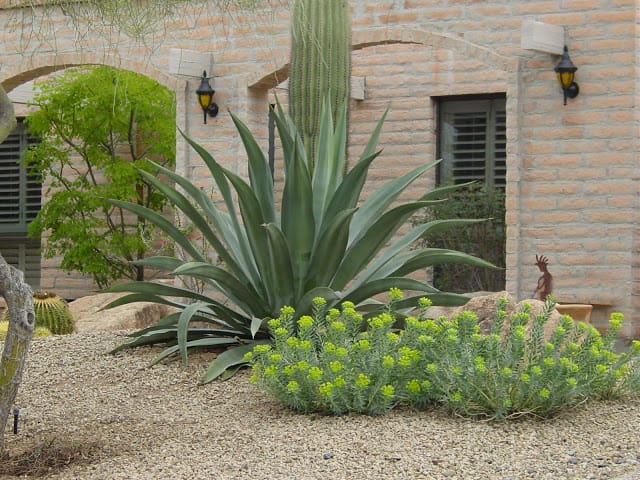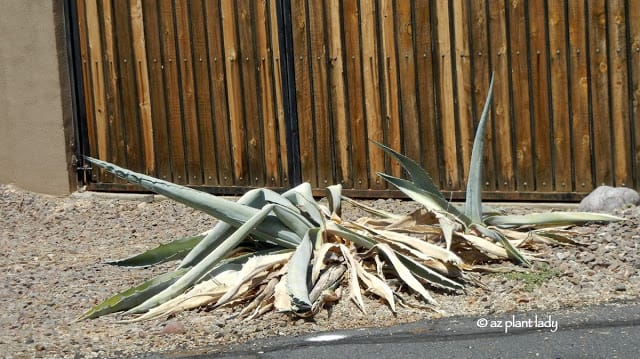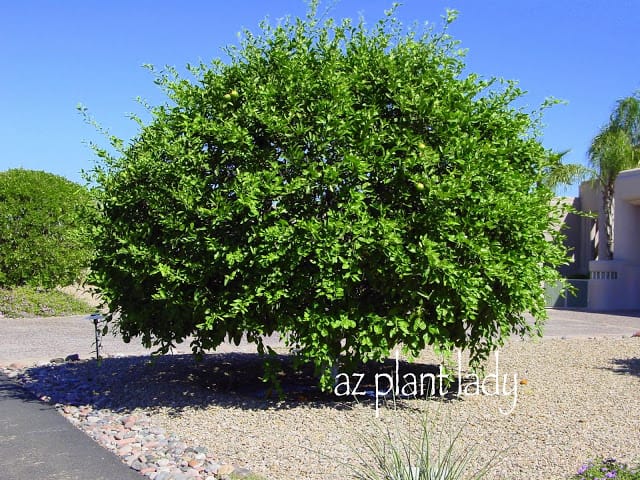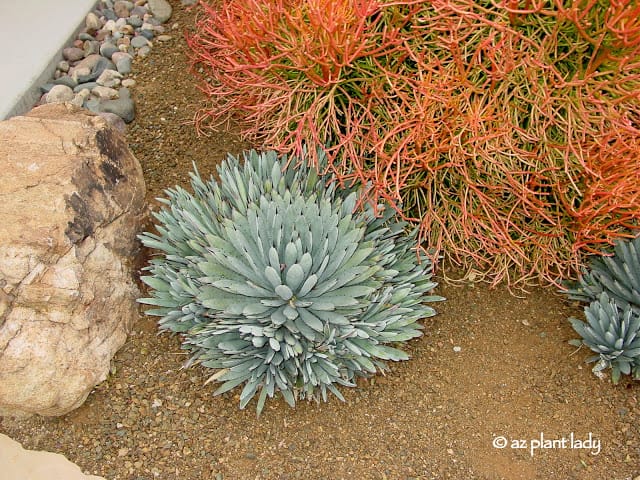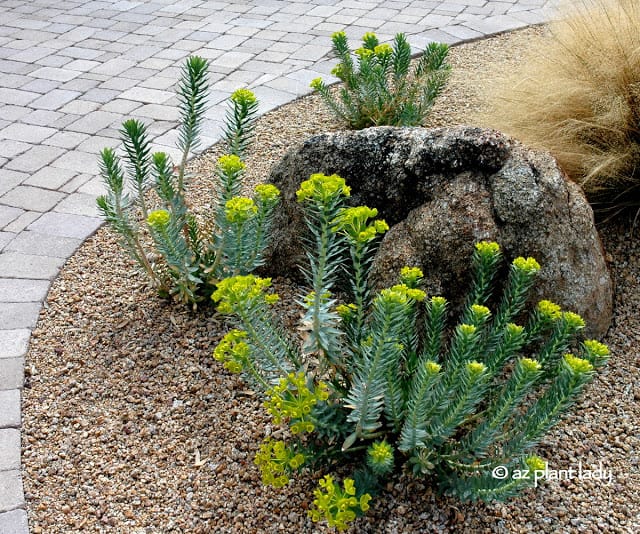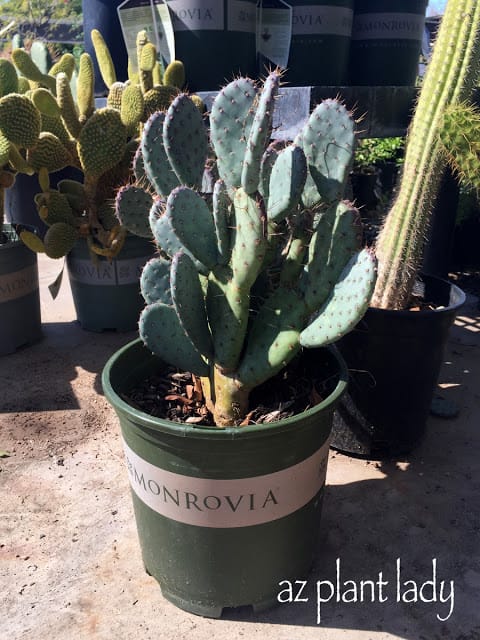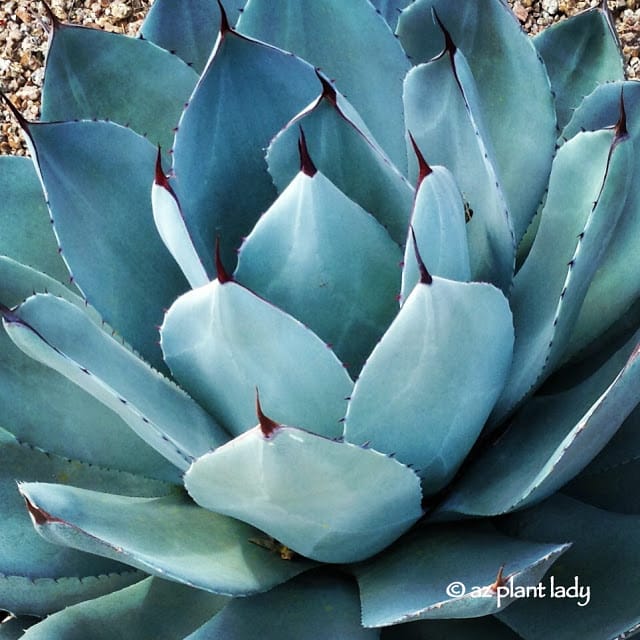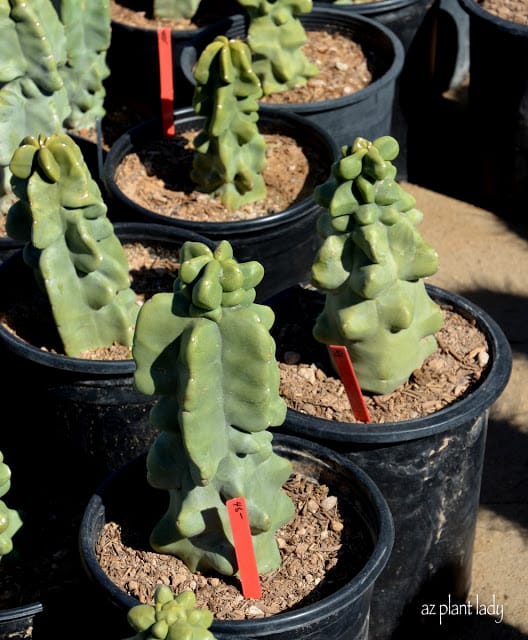With warming temperatures, many of us begin to think about changing out our cool-season annual flowers for plants that can take the heat of summer.
Last week, I gave a potting demonstration for attendees of a local home tour.
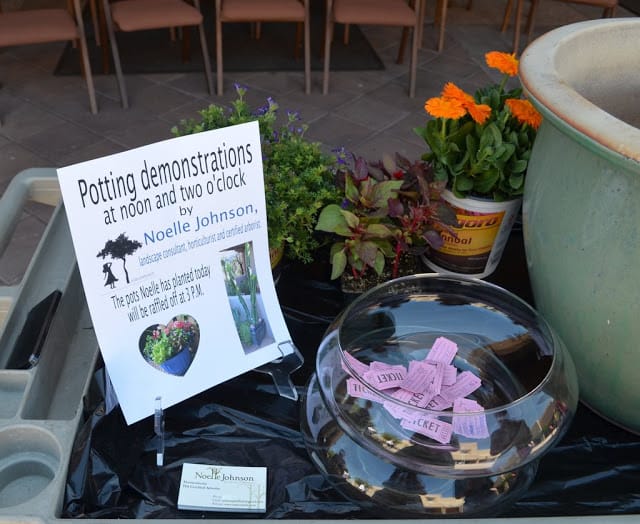
Potting demonstration
The pots were then to be raffled off.
I planned on creating two succulent pots and one using a combination of perennials and annual flowers.
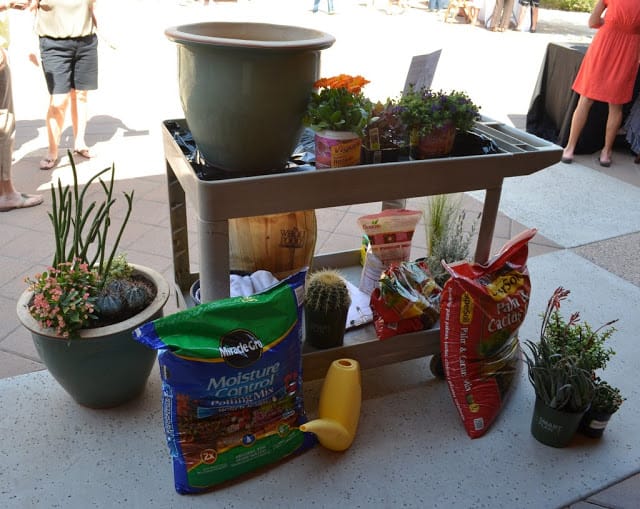
My daughter, Rachele, came with me to help carry the bags of soil, pots, plants, etc.
It was also an opportunity to spend time together before she left for the Navy.
There were to be two different potting demonstrations. I created one succulent pot ahead of time…
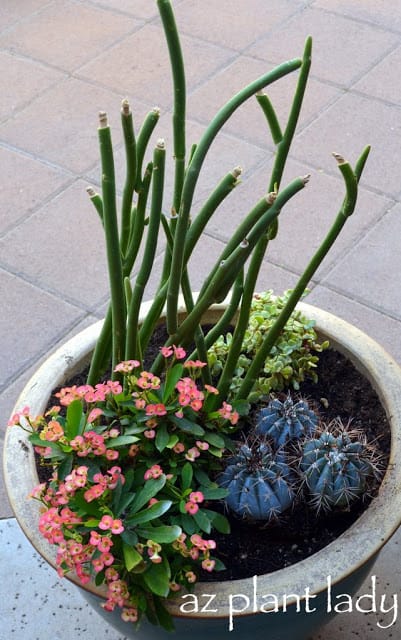
This container has pink-flowering Crown of Thorns, tall Lady’s Slipper, Variegated Elephant’s Food and a gray-colored cactus.
I like to create container plantings with a tall plant for vertical interest. The Crown of Thorns provides striking floral color. The Elephant’s Food will trail over the edge of the pot as it grows, which adds texture and softens the container’s lines.
Lastly, the gray-colored cactus (I admit that I don’t know what kind it is), adds great color contrast with its gray/blue color.
Soon, it was time for the first demonstration. My daughter took photos of me talking. The lighting is terrible because I was in the shade and behind me was the sun, but you can still see what I was doing.
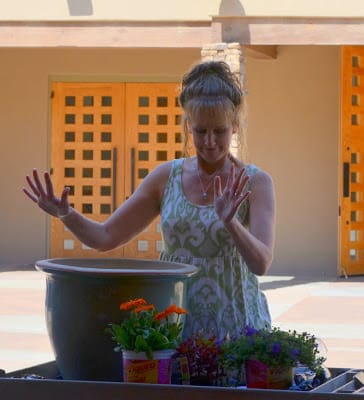
Looking down at my notes. Can you tell I use my hands when I talk?

Planting the orange Calendula.

Adding Purple Verbena and filling the spaces with Celosia.

I just need a bit more Celosia in the front, don’t you think?
For this container, the tall vertical interest comes from Mexican Feather Grass. The bright color is from the Calendula. The trailing plant is Purple Verbena and gray Lavender provides the color contrast.
I used Celosia to fill in the empty spaces. I was pretty happy with how it turned out.
When planning on what plant combinations will look good in a container, I simply arrange the plants, while they are still in their containers at the nursery.
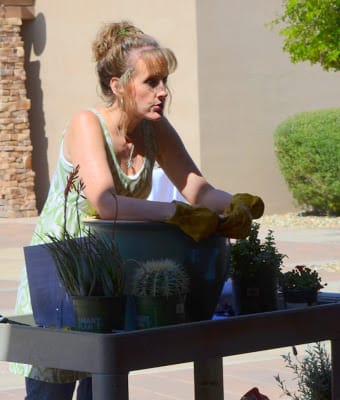
Now it was time for planting the second succulent pot.
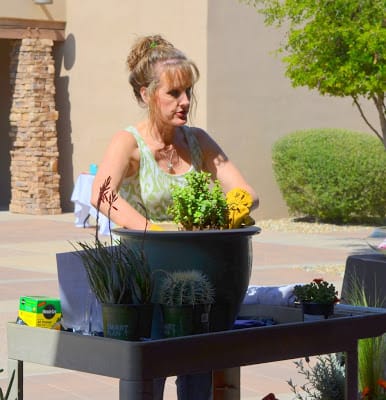
First, adding the Elephant’s Food.
Ever wonder how to plant a cactus without getting pricked?
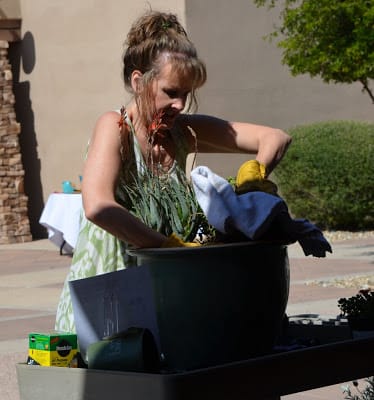
An old towel, folded into quarters (4 layers thick) works great. I covered the top of the Golden Barrel Cactus with the towel as I turned it over to plant. The towel came off easily once I was finished.
Newspaper is also helpful in planting cactus.
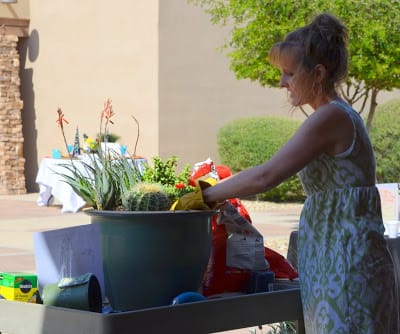
Almost done…
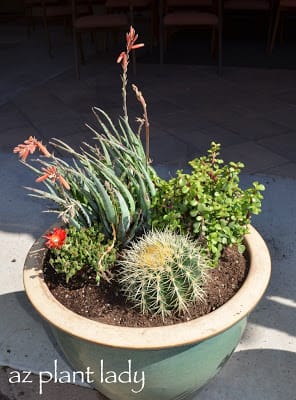
Finished!
The Blue Elf Aloe provides the height for this planting combination. Elephant’s Food will grow to trail over the side. The Golden Barrel cactus adds color contrast with its round shape and yellow spines. Ice plant with brightly-colored red flowers adds a needed splash of color.
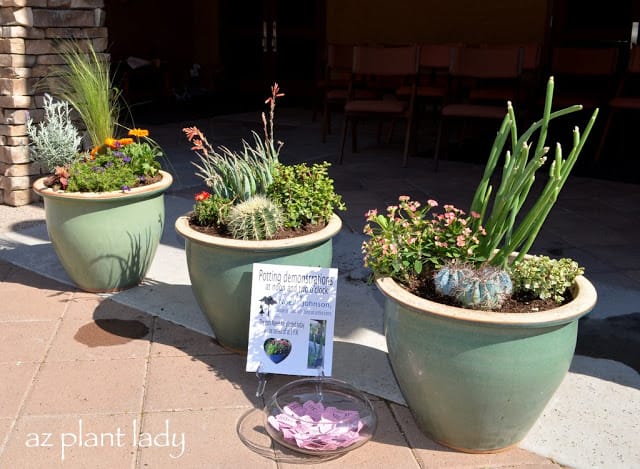
The pots each went to good homes and raised money for future community projects.
Do you like growing plants in containers?
Or maybe, you haven’t tried before.
Well, it’s not difficult. Come back for a visit in a couple of days and I’ll share with you my container guidelines.






